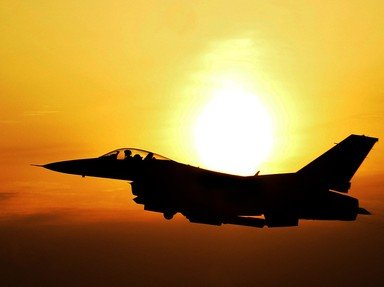Quiz Answer Key and Fun Facts
1. Which aircraft, known as the 'Stringbag', was given its name in part due to its tangle of struts, spars and tensioning cables; this gave it the look of the versatile 'carry-all' string bags that were popular with housewives of the period?
2. Which Luftwaffe aircraft, designed to strike terror into the hearts of its enemies, took its nickname from an abbreviated form of its official designation?
3. Proving unsuitable in its original role as a passenger aircraft because of its long and very slender fuselage, the 'Flying Pencil' was the nickname given to which Luftwaffe bomber force mainstay during the early war years?
4. During his political campaigning in 1932, Adolf Hitler used examples of this brand new aircraft as his personal transport. Known affectionately as 'Tante Ju' or 'Iron Annie', which tri-engine aircraft was a personal favourite of the Führer?
5. Orders were placed for this US medium bomber before any prototype had flown and before any pre-production aircraft had been submitted for evaluation. Plagued with problems initially, which aircraft known as the 'Widow Maker' went on to become one of the best medium bombers of the war?
6. Designed as a primary or elementary trainer, which aircraft became affectionately known as the 'Maggie' and was the first monoplane trainer to be used by the RAF?
7. The Vickers Wellington was a British medium bomber that took its nickname from cartoon character Popeye's best friend whose first name was 'Wellington'; but what was his surname?
8. The Messerschmitt Me 109/G was nicknamed the 'Jug' by its pilots and ground crews'; is this statement true or false?
9. Almost as heavy as some bombers of the period, this United States heavy fighter was known as the 'Gabelschwanz Teufel' or 'Fork-Tailed Devil' by the Luftwaffe pilots that met it in combat. Which US fighter gained this diabolical nickname?
10. The Short Sunderland flying boat had such a 'prickly' reputation with the enemy that on one occasion it was reported that a crew member from an unarmed example fired a sub-machine gun at a pair of Messerschmitt 110s which both promptly turned tail and fled! By which nickname was this RAF Coastal Command aircraft known?
Source: Author
SisterSeagull
This quiz was reviewed by FunTrivia editor
stedman before going online.
Any errors found in FunTrivia content are routinely corrected through our feedback system.

